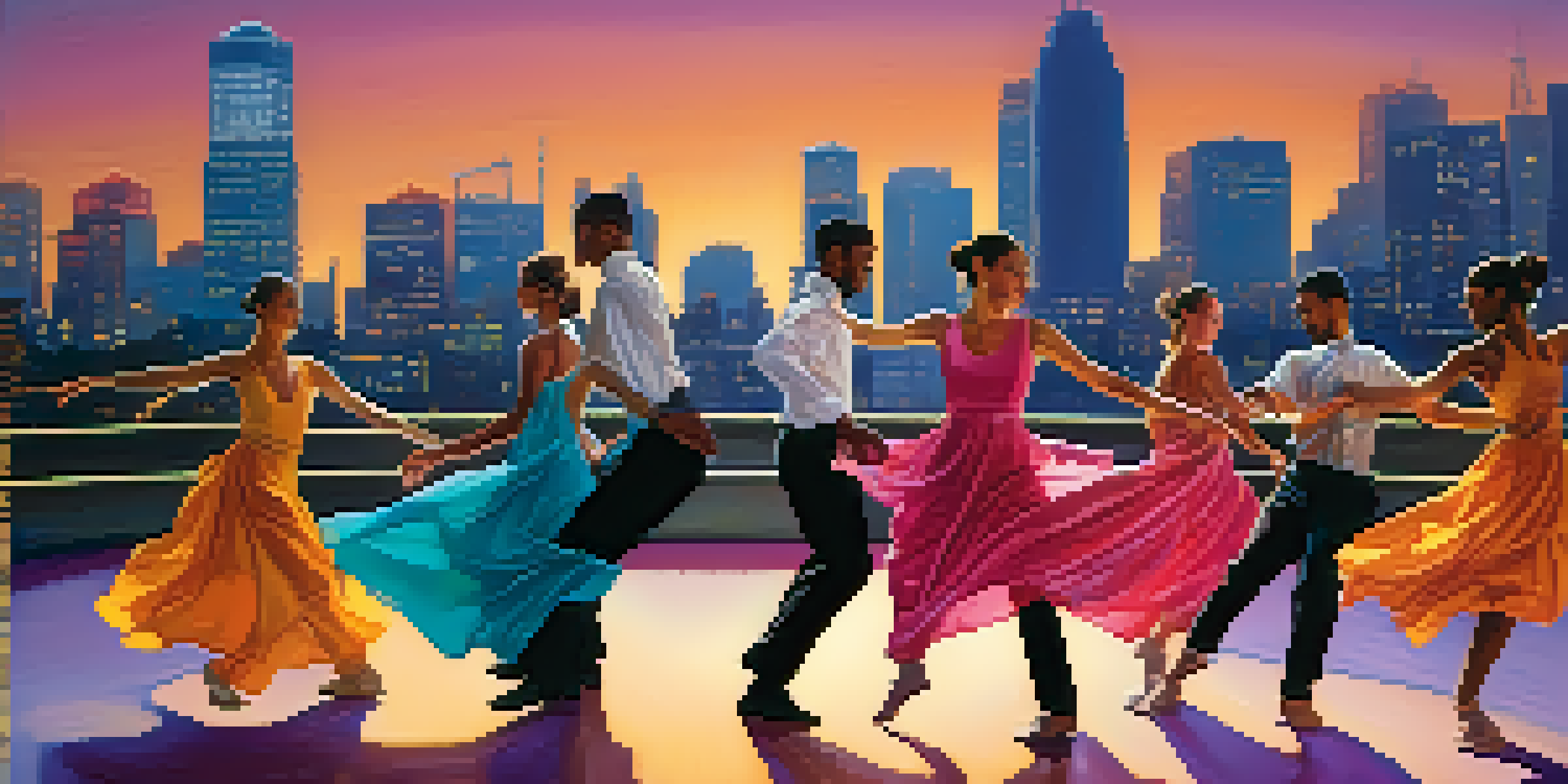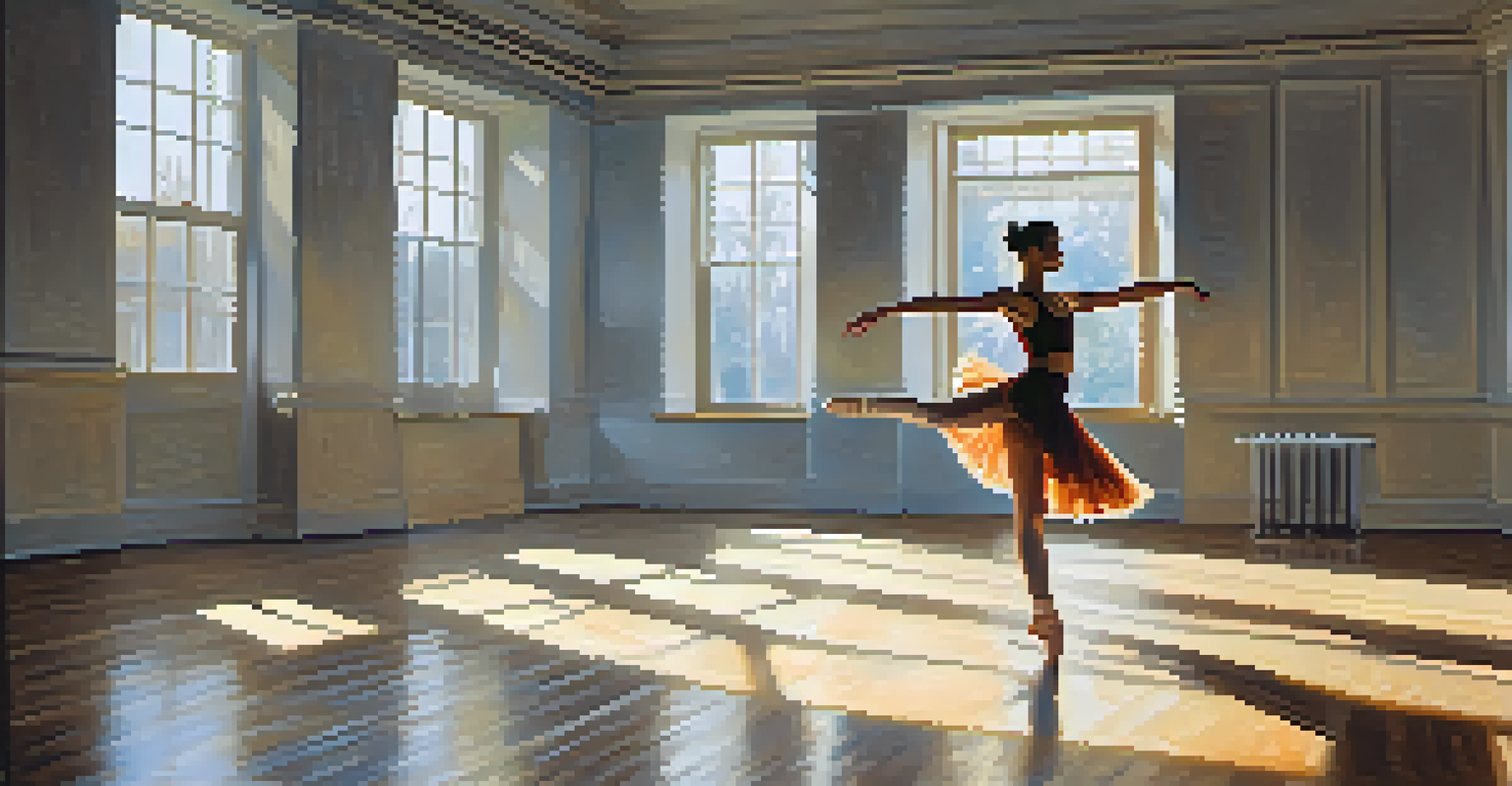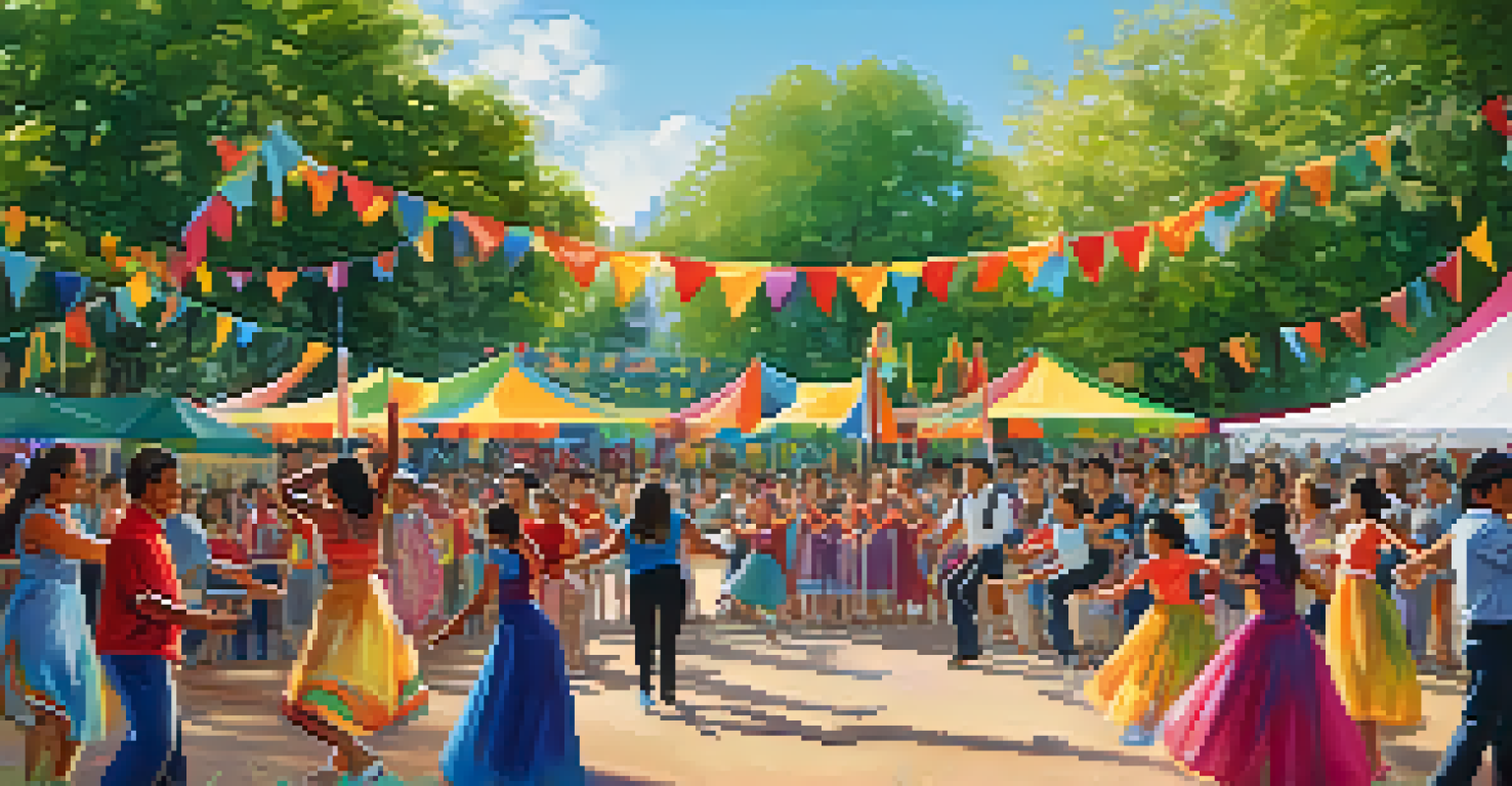Dance and Gender: How Movement Expresses Identity and Roles

Understanding Dance as a Form of Expression
Dance transcends mere movement; it embodies emotion and identity. Through various styles and forms, individuals convey their personal narratives and cultural backgrounds. For instance, ballet often emphasizes grace and precision, while hip-hop celebrates rhythm and individuality. This rich tapestry of movement allows dancers to express who they are beyond words.
Dance is the hidden language of the soul.
Moreover, dance serves as a mirror reflecting societal norms and expectations. Different cultures have unique dances that highlight gender roles, showcasing how movement can both reinforce and challenge these roles. As dancers engage in these expressions, they not only connect with their heritage but also explore their own identities within those frameworks.
Ultimately, understanding dance as a form of expression invites us to appreciate the complexity of identity. It encourages viewers and participants alike to consider how movement can communicate layers of meaning, including gender, culture, and personal experiences.
Historical Perspectives on Gender in Dance
Historically, dance has played a pivotal role in defining and reinforcing gender roles. From the Victorian era's strict expectations on women's behavior to the bold expressions of the 1920s flapper movement, dance has mirrored societal shifts. Each era's dance styles often reflected the prevailing attitudes towards masculinity and femininity, shaping how individuals expressed their identities.

For example, traditional dances often featured men as leaders and women as followers, reinforcing a patriarchal structure. However, as society has evolved, so too have the roles within dance. Contemporary choreographers are increasingly challenging these norms, showcasing the fluidity of gender and allowing for a broader range of expressions in movement.
Dance as Identity and Expression
Dance serves as a powerful medium for individuals to convey their emotions, identities, and cultural backgrounds.
This historical lens allows us to see how dance has not only been a reflection of gender roles but also a space for resistance and change. As we revisit these past styles, we can appreciate how they have paved the way for more inclusive representations in today's dance landscape.
The Role of Dance in Challenging Gender Norms
Dance has always been a platform for challenging societal norms, particularly regarding gender. Many contemporary choreographers intentionally use their work to push boundaries, inviting audiences to question traditional definitions of masculinity and femininity. This can be seen in performances that feature men in traditionally feminine roles, breaking away from established stereotypes.
We are all born with a unique identity, and it is our responsibility to express that identity through our art.
Take, for instance, the rise of gender-neutral dance competitions that celebrate all forms of expression without adhering to binary categories. These events not only empower dancers to embrace their true selves but also encourage audiences to reconsider their perceptions of gender. The art form becomes a powerful tool for advocacy and change.
By incorporating diverse movements and styles, dance serves as a vehicle for social commentary. It allows individuals to express their identities authentically, creating a dialogue around gender that is both personal and universal.
Dance as a Reflection of Gender Fluidity
In recent years, the concept of gender fluidity has gained prominence, and dance is at the forefront of this movement. Many dancers now embody a spectrum of identities through their performances, challenging the rigid binaries of male and female. This fluidity in movement invites a broader understanding of gender, allowing individuals to express themselves in ways that align with their true selves.
Choreographers are increasingly creating works that celebrate this fluidity, using movement to explore themes of identity and self-discovery. For instance, performances that blend traditionally masculine and feminine styles not only showcase athleticism and grace but also reflect the complexities of modern gender identities. Through these explorations, dancers and audiences alike can engage in conversations about acceptance and understanding.
Challenging Gender Norms Through Dance
Contemporary dance actively challenges traditional gender roles, encouraging broader expressions of masculinity and femininity.
Ultimately, dance becomes a celebration of diversity, allowing for the expression of various gender identities. This evolution in the dance world not only reflects societal changes but also paves the way for future generations to embrace their identities more freely.
Cultural Influences on Gender and Dance
Cultural context plays a significant role in shaping how gender is expressed through dance. Different cultures have unique traditions that inform their dance styles, often reflecting specific gender roles and expectations. For instance, traditional Indian dance forms like Bharatanatyam highlight feminine grace and storytelling, while African dance often emphasizes communal celebration and rhythm.
As globalization continues to blur cultural lines, dancers are increasingly blending styles to create innovative forms of expression. This fusion allows for a richer exploration of gender, as dancers draw from various influences to craft performances that resonate with diverse audiences. Cultural exchange in dance not only enhances creativity but also fosters understanding across different gender expressions.
Through the lens of cultural influences, we can see how dance serves as a dialogue between tradition and modernity. This dialogue encourages individuals to explore their identities while honoring their cultural heritage, creating a vibrant landscape of movement that reflects the complexities of gender.
The Impact of Dance on Gender Identity Development
Dance can significantly impact an individual's development of gender identity. For many, engaging in dance provides a safe space to explore and express their feelings about gender. This exploration can be particularly empowering for young dancers who may feel constrained by societal expectations, allowing them to discover their authentic selves.
Participating in dance classes or performances fosters a sense of belonging and community, which is crucial for personal growth. As dancers form connections with others who share similar experiences, they often find validation and support in their journeys of self-discovery. This communal aspect of dance can be transformative, helping individuals embrace their gender identities.
Cultural Influence on Gender Expression
Cultural contexts shape how gender is expressed in dance, fostering a rich dialogue between tradition and modern interpretations.
Additionally, the visibility of diverse gender expressions in dance inspires others to embrace their uniqueness. By showcasing a range of identities, dance can challenge stereotypes and promote acceptance, ultimately contributing to a more inclusive society where everyone feels free to express themselves.
The Future of Dance and Gender Expression
As we look to the future, the landscape of dance and gender expression is evolving rapidly. With an increasing emphasis on inclusivity and diversity, new opportunities for expression are emerging. Choreographers are experimenting with innovative ways to represent gender, fostering an environment where everyone can see themselves in the art form.
Digital platforms have also expanded the reach of dance, allowing underrepresented voices to share their stories. Social media has become a powerful tool for dancers to showcase their work, connect with wider audiences, and advocate for change. This democratization of dance promotes a richer variety of gender expressions and narratives.

In this dynamic environment, the potential for dance to influence societal perceptions of gender is immense. As artists continue to push boundaries and challenge conventions, we can anticipate a future where dance not only reflects our identities but also plays a vital role in shaping a more inclusive world for all.